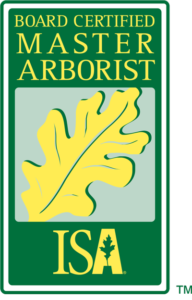Tree Cabling and Bracing: A Guide
Tree cabling and bracing are specialized methods used to provide additional support to trees that may be structurally weak or compromised. While these techniques can be highly effective in preserving the stability and health of a tree, it is essential to note that they should be performed by experienced arborists or tree care professionals. As a responsible tree care provider, we do not offer these services, but we encourage proper education on the topic. Here’s a brief guide to tree cabling and bracing:
What is Tree Cabling and Bracing?
Tree cabling and bracing involve the installation of flexible cables or rigid rods to reinforce a tree’s structure. These support systems are commonly used to prevent limb failure, reduce stress, and mitigate potential risks, especially in older or damaged trees.
When is Cabling and Bracing Necessary?
Cabling and bracing may be necessary when a tree has:
- Weak or split crotches that could fail.
- Multiple trunks that may cause instability.
- Damaged or decayed limbs.
- A history of previous limb failure.
The Process of Cabling and Bracing
The process requires a thorough assessment by a certified arborist to determine the tree’s structural weaknesses. Here’s a typical sequence:
- Assessment: Identification of weak areas and determination of appropriate support.
- Installation: Placement of cables or braces at strategic locations.
- Monitoring: Regular inspections to ensure the system is functioning as intended.
Benefits of Cabling and Bracing
- Prevents Failure: Reduces the risk of limb or trunk failure.
- Maintains Beauty: Helps maintain the natural shape and beauty of the tree.
- Extends Life: May extend the lifespan of a structurally compromised tree.
Risks and Considerations
It’s essential to realize that cabling and bracing are not one-size-fits-all solutions and can sometimes cause more harm than good if improperly executed. Thus, always consult a professional arborist who specializes in these techniques.
Conclusion
Tree cabling and bracing are advanced methods to support trees with structural weaknesses. While they can preserve and protect, they require professional assessment and implementation. If you believe a tree on your property needs such support, please consult with a specialized tree care provider who offers these services.


